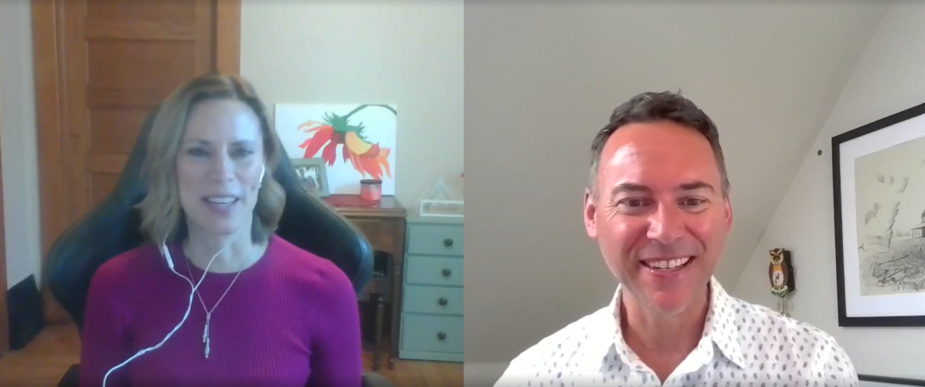K-12 school and district leadership is more complex than ever, with increasing demands placed on educators. Yet, leadership development is often treated as a one-time workshop instead of an ongoing investment. Leadership growth requires strong networks, structured coaching or mentorship, and a culture of learning and improvement that includes administration.
To develop more effective K–12 leaders, schools need more than one-off training—they need sustained support and a focus on well-being. In this LinkedIn Live, ALP’s Amos Fodchuk and Janelle McLaughlin unpack what drives leadership development that lasts.

Leadership Development is a Continuous Process
Leadership development in education isn’t about a summer institute followed by a checklist of to-dos. As with teachers, growing building and district leaders requires a commitment to ongoing growth and adaptation. As Janelle shared, real leadership growth happens when mentorship, reflection, and structured professional learning are prioritized.
“Now more than ever, we need to be building up leaders so that they can help sustain the rest of their staff. It’s not a ‘go-to workshop and you’re good.’ Leaders are seeing the need for continuous learning and support so that they can be in the position to offer that to the people on their staff.”
One practical strategy is for leaders to prioritize both structured networking opportunities and self-reflection practices. Whether it’s participating in leadership cohorts, engaging in peer coaching, or setting aside time for reflective writing, leadership development thrives when it’s built into an ongoing routine.
Creating Leadership Networks that Foster Growth Across Districts
One of the biggest challenges in school leadership is isolation. Many district leaders find themselves in small or geographically dispersed districts, making collaboration with peers difficult. To address this challenge, ALP fosters leadership networks that connect school and district leaders across districts and regions.
At the recent KySTE Summit in Kentucky, ALP partnered with KAST (formerly known as KySTE) and Dell Technologies to launch new leadership initiatives that provide free professional learning across the state. These initiatives include:
- Generative AI Executive Consulting: Helping district leaders build policies and AI literacy frameworks collaboratively.
- Innovative Networking Groups: Creating role-specific cohorts (e.g., CIOs, digital learning coaches, principals) to facilitate shared problem-solving.
- Cybersecurity: Providing district leaders with an interactive training and asynchronous tools to enhance their cybersecurity strategies.
Janelle emphasized why these opportunities matter: “When I was in a district position, I was a team of one. I would have loved to have had something like these networking groups to collaborate alongside peers, talk about problems of practice, and brainstorm solutions together.”
By structuring leadership development around the community, these programs ensure that leaders don’t have to navigate challenges alone. Instead, they can learn from peers, share strategies, and implement best practices across multiple districts.
Using Data to Drive Leadership Growth in Education
Sustainable leadership development isn’t just about networking—it’s also about measuring progress and making data-driven decisions. ALP has been refining its approach to leadership development by integrating competency frameworks and validated metrics that help leaders assess their growth.
“Even to decide which services we were going to provide in Kentucky, we had to look at data,” Janelle explained. “We couldn’t provide our entire [service] catalog, so we analyzed past partnerships to determine what would be most impactful for KY districts. Generative AI continues to be a huge area of need, and cybersecurity is a priority for Kentucky leaders. The data supported these decisions.”
ALP’s data-driven leadership approach includes:
- Data-informed decision-making to identify the most critical leadership needs.
- Personalized competency modeling so leaders can focus on incremental improvements rather than unrealistic moonshot goals.
- Ongoing feedback loops that refine leadership development efforts in real time.
Amos reflected on why this data-driven approach is so important: “Leadership can exist in a chamber that’s opaque. The degree to which we feel aware of our own growth, supported in that growth, and ultimately in a position to pay it forward is the key to sustaining leadership development.”
Protecting Leadership Well-Being in Schools
Leadership is demanding, and without boundaries, it’s easy to burn out. During the conversation, both Amos and Janelle emphasized the importance of work-life balance and setting professional boundaries to sustain long-term leadership effectiveness.
Amos shared his personal experience with reflection: “I just came away from a retreat where I unplugged for a full week. I built time into my day for at least two hours of written reflection, and I forgot how powerful that practice is. Writing forces me to be precise about my perceptions, my feelings, and my commitments.”
Janelle reinforced this idea, adding, “Reflection is key, but it has to be intentional. If it’s not scheduled, it won’t happen. I always tell leaders to protect time for their own learning and well-being just like they protect time for others.”
A few strategies leaders can implement:
- Block time for reflection–even if it’s a few minutes a day.
- Prioritize professional learning, even if it means asking for coverage.
- Avoid responding to emails during certain hours outside the work day to set clear professional boundaries.
- Identify the parts of leadership that bring personal fulfillment and lean into them.
- Build leadership capacity in staff so you can delegate.
Leadership is a Shared Journey for Schools and Districts
Effective leadership doesn’t happen in isolation—it thrives through a community that respects it, collaboration that affirms it, and a culture of continuous learning that grows it. Whether through structured networking groups, AI-driven leadership support, or personalized competency modeling, sustainable leadership development ensures that educators are equipped to grow and support their teams over time.
Amos closed the conversation with a challenge for leaders: “How are you investing in your own leadership growth? Leadership development is not just about getting better for yourself, but ensuring that you’re lifting others up along the way.”
Looking for ways to strengthen leadership development in your district? Contact ALP to explore our professional learning opportunities.
Note: These insights were derived from a LinkedIn Live event hosted on March 27, 2025, featuring Amos Fodchuk, ALP President and Founder, and Janelle McLaughlin, Senior Partnerships Consultant at ALP.
